
Vegetation Around Las Vegas
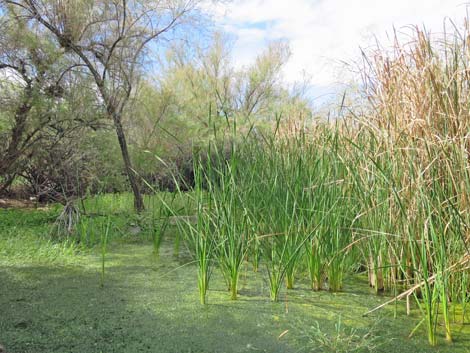 Narrowleaf Cattail at a spring in Gold Butte National Monument |
General: Narrowleaf Cattail (Typha angustifolia) is an erect, emergent aquatic species with long, narrow leaves that usually grow 5 to 7 feet above the water surface. Flowers are born densely on a spike, the "cat tail." Cattails are the tall plants with long narrow leaves often seen on the edges of ponds. There are three species of cattail in North America, all of which hybridize. This species can be recognized by height (5-10 ft tall; short compared to the others), a narrow blade (1/6 to 1/2 inches; very narrow compared to the others), a short (1/2 to 3 inch) naked axis between the staminate and pistillate flowers, and the blade lacks glands on inside of the leaf near the base. The distributions of the species overlap, and hybrids are common where species occur together, making identification sometimes difficult. Narrowleaf Cattail can be found around ponds, spring pools, seeps, and streams in the Lower Sonoran (Creosote-Bursage Flats) and Upper Sonoran (Mojave Desert Scrub and Pinyon-Juniper Woodland) life zones. |
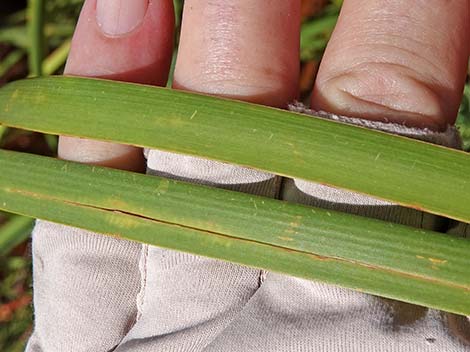 Leaves 1/6 to 1/2 inches wide (very narrow compared to other species) |
Family: Cattail (Typhaceae) Other Names: Plant Form: Perennial emergent plant with a single, stiff stem; many linear leaves; and a cylindrical flowerhead. Height: Stem and leaves usually 5 to 7 feet above water surface (5 to 13 feet total) Stems: Upright stems grow from long rhizomes in the mud. Stem erect and stiff. |
 Staminate and pistillate flowers separated by a naked gap |
Leaves: Blades long (5 to 7 feet) and linear (1/6 to 1/2 inch wide). Blades attached near the base of the stem. Blade lacks glands on the inside of the leaf near the base. Flowers: Blooms June to July. Inflorescence on a stalk, lower than the leaf tips. Staminate and pistillate flowers grow separately on the same stalk (staminate above pistillate), with a naked gap on the stem of 1/2 to 3 inches. Seeds: Small seed with long hairs attached; blow in the wind. Habitat: Ponds, streams, river banks, and other wet areas. Sometimes grows out of the water on the edge of water body. Elevation: To about 6,500 ft. Distribution: North America and Eurasia. This species occurs in the Bridge Mountain Wilderness Area and in Gold Butte National Monument. Comments: All three North America species hybridize. |
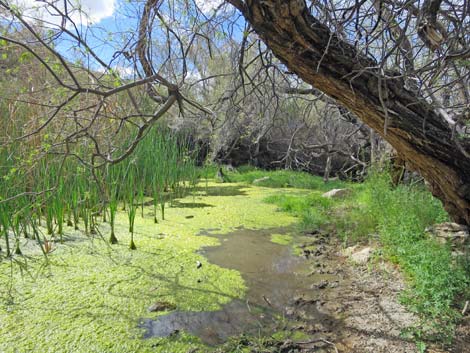 Narrowleaf Cattail at a spring in Gold Butte National Monument |
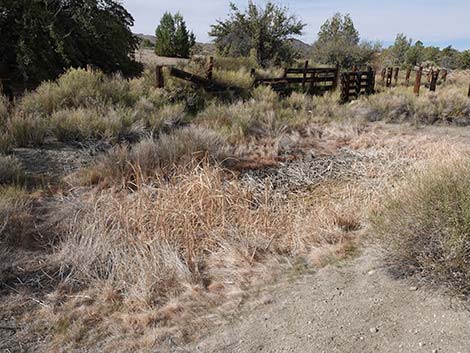 Narrowleaf Cattail at a drying spring in Gold Butte National Monument |
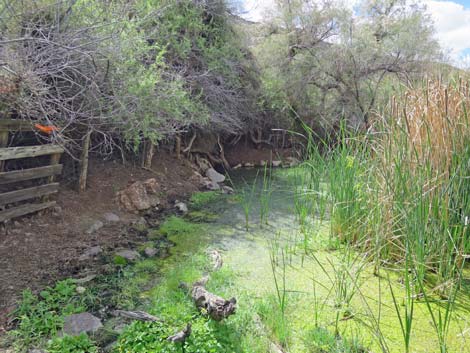 Narrowleaf Cattail at a spring in Gold Butte National Monument |
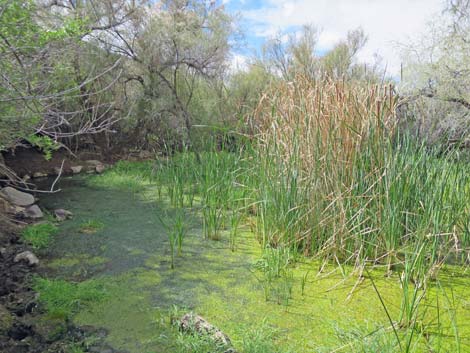 Narrowleaf Cattail at a spring in Gold Butte National Monument |
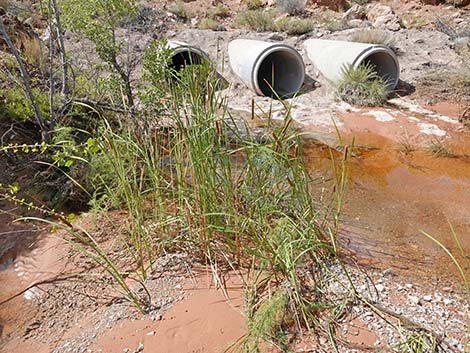 |
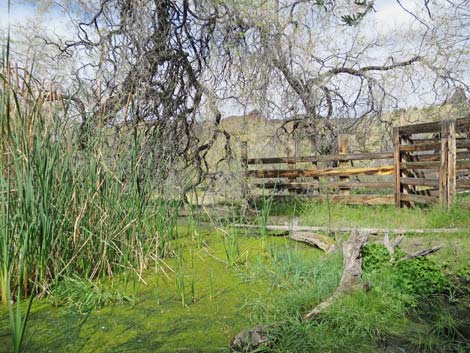 |
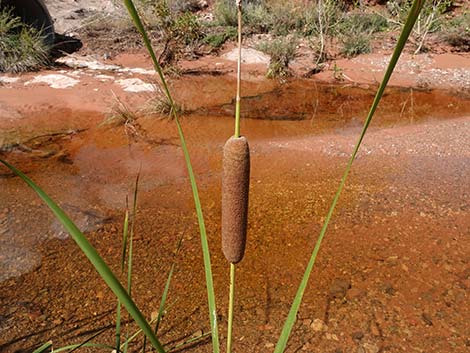 Note the naked axis (green stem) above the cattail |
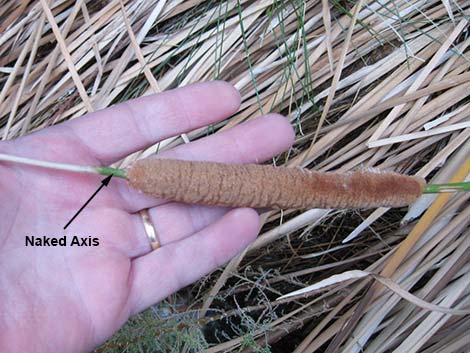 Note the naked axis (green stem) above the cattail |
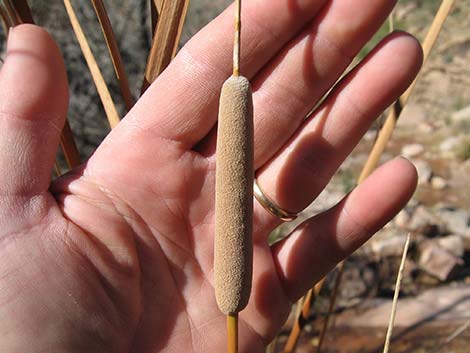 Note small size of the "cattail" and very narrow leaves |
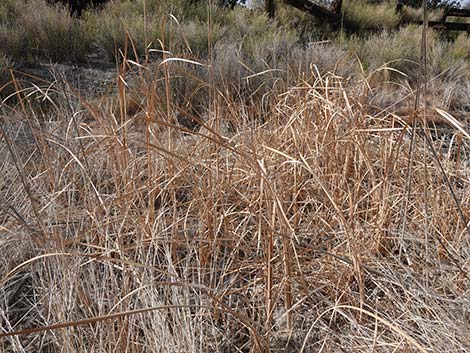 Note very narrow leaves |
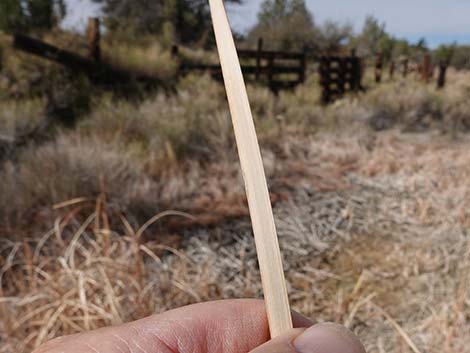 Very narrow leaf dorsal surface |
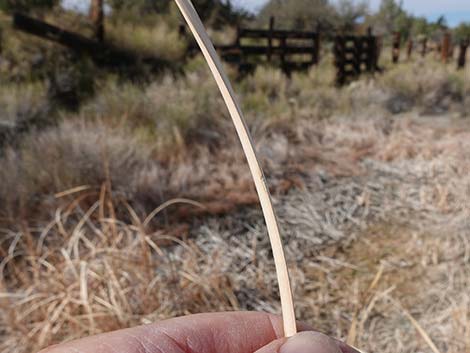 Very narrow leaf lateral surface |
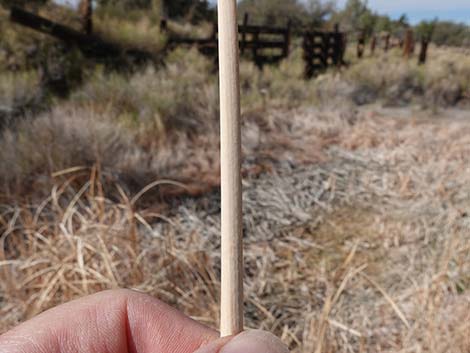 Very narrow leaf ventral surface |
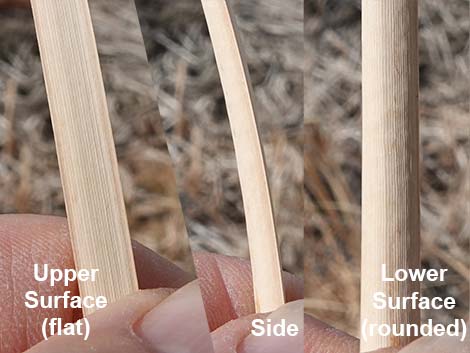 Upper, Side, and Lower surfaces of a leaf with fingers for scale |
All distances, elevations, and other facts are approximate.
![]() ; Last updated 240810
; Last updated 240810
| All Aquatics | Plant Species Index | Glossary | Copyright, Conditions, Disclaimer | Home |